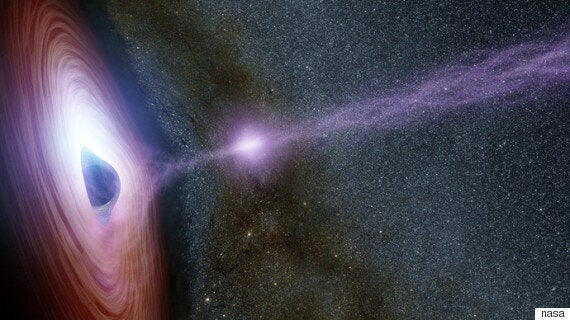NASA has for the first time captured a supermassive black hole sending out beams of X-rays.
Scientists have always known that massive pulses of energy can be generated by black holes. However, this is the first time researches have been able to pin down a cause.
Based on observations made by the Nuclear Spectroscopic Telescope Array, or NuSTAR, researchers were able to spot how a mysterious source of high energy particles around the black hole, known as coronas, generate flares.

It is generally well-understood that black holes don't let anything escape.
However, there are regions outside a black hole where flares do escape.
This recent discovery from the NuSTAR team, made in conjunction with the Swift mission, helps understand this science a little better.
SEE ALSO:
- SEE ALSO:
- Stephen Hawking Says Blacks Holes Have A 'Way Out'
- Falling Into A Black Hole Could Turn You Into A Hologram
- Monster Black Hole Wakes Up After 26 Years And Devours Star
- Black Hole Event Horizon Telescope Will Be 'Size Of The Earth'
- Neil deGrasse Tyson Describes The Horrific Demise You'd Experience Inside A Black Hole
Black holes are surrounded by disks of hot, glowing material and because its proximity to a black hole, swirling gas is pulled into this material, heating it up.
This can cause light to be emitted from it and researchers have to sought to understand how coronas are linked to this phenomenon.
"This is the first time we have been able to link the launching of the corona to a flare," said Dan Wilkins, lead author of a a paper set to be published in the the Monthly Notices of the Royal Astronomical Society.
"This will help us understand how supermassive black holes power some of the brightest objects in the universe."